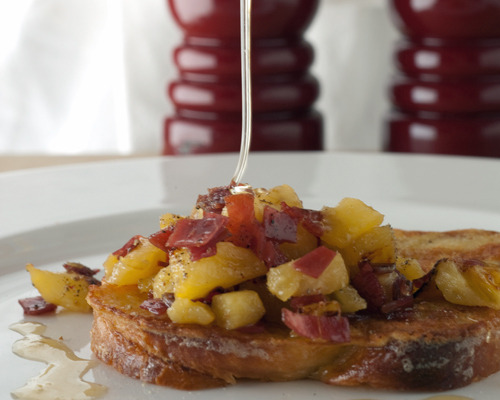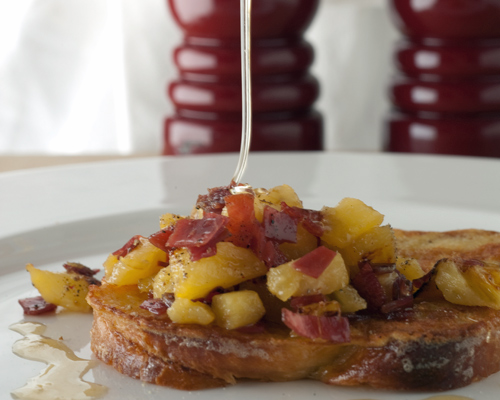Bringing A French Revolution To The Home Cook's Kitchen
Pierre Gagnaire, a three-Michelin-starred French chef who has been dubbed "The Wizard of Paris" by The New York Times, seems to have a penchant for naming things after himself. Many of his restaurants around the world are named after "moi" — the famed Pierre Gagnaire in Paris on Rue Balzac, Pierre in Hong Kong, Pierre Gagnaire À Séoul in, you guessed it, Seoul, and Pierre Gagnaire – Tokyo. So it's no surprise then that his cookbook follows in the same vein. It's titled Pierre Gagnaire: 175 Home Recipes with a Twist (Flammarion, $35).
Originally published in French, this cookbook is Gagnaire's attempt to bring a little bit of his magic into the kitchens of home cooks without restaurant-level skill sets or ingredient lists. Does he succeed? To some degree, yes. Some of the recipes in the book sound a bit too simple (or perhaps, they're just a bit understated) — buckwheat pancakes, hot chocolate, or grilled sea bass, anyone? Uhh, maybe. On the other hand, some are just a little too "out there" for the ordinary home cook — foie gras crêpes with almonds and apricots come to mind, for example. But, there are definitely some gems in there that strike the right balance. Gagnaire may not think of himself as a revolutionary — in the introduction to the book, he writes, "It has never been my intention to revolutionize the culinary arts; I have always been guided in my life as a chef by the principles of pleasure, surprise, and by the intimate conviction that it is possible to have an offbeat approach to food while still paying respect to the raw ingredients" — but it's probably a safe bet to say that there aren't very many people thinking of making caramelized omelettes for breakfast, duck club sandwiches with provolone for lunch, or scallops marinière for dinner. And that's a good thing. These are the type of recipes that need to fill his next book, perhaps.
Just as important as the recipes in a cookbook aimed at home cooks, though, are the photographs. And here we have another bone to pick — the photography, while beautiful, isn't particularly helpful. The photos are more like highly aesthetic pictures of ingredients, like the kind you would find in some high-end art gallery or a museum, rather than photos of the dishes themselves. And they're few and far between. Photos of actual dishes are also sometimes shot far too closely to really be able to tell what anything is supposed to look like. Maybe we just don't get that part of the book, but if a book is aiming for the home cook, great pictures definitely help it fly off the shelf.
It's not a perfect realization of Gagnaire's noble intentions, but for a first attempt, it's not bad. There are enough interesting recipes to keep experienced home cooks entertained, but for anyone who doesn't use their mandoline, we'd suggest waiting for his next book.
French Toast with Pineapple Marmalade and Viande des Grisons
Homemade marmalade and fine air-dried beef similar to bresaola from Grisons, a region located near the Alps, dress up a brioche French toast. (Photo courtesy of Jacques Gavard)
Gagnaire draws upon his experience to bring French sensibilities to a Japanese classic. (Photo courtesy of Jacques Gavard)
This lemon cake turns into something truly special with the addition of a Kaffir lime and orange zest custard. (Photo courtesy of Jacques Gavard)
Will Budiaman is the Recipe Editor at The Daily Meal. Follow him on Twitter @WillBudiaman.

